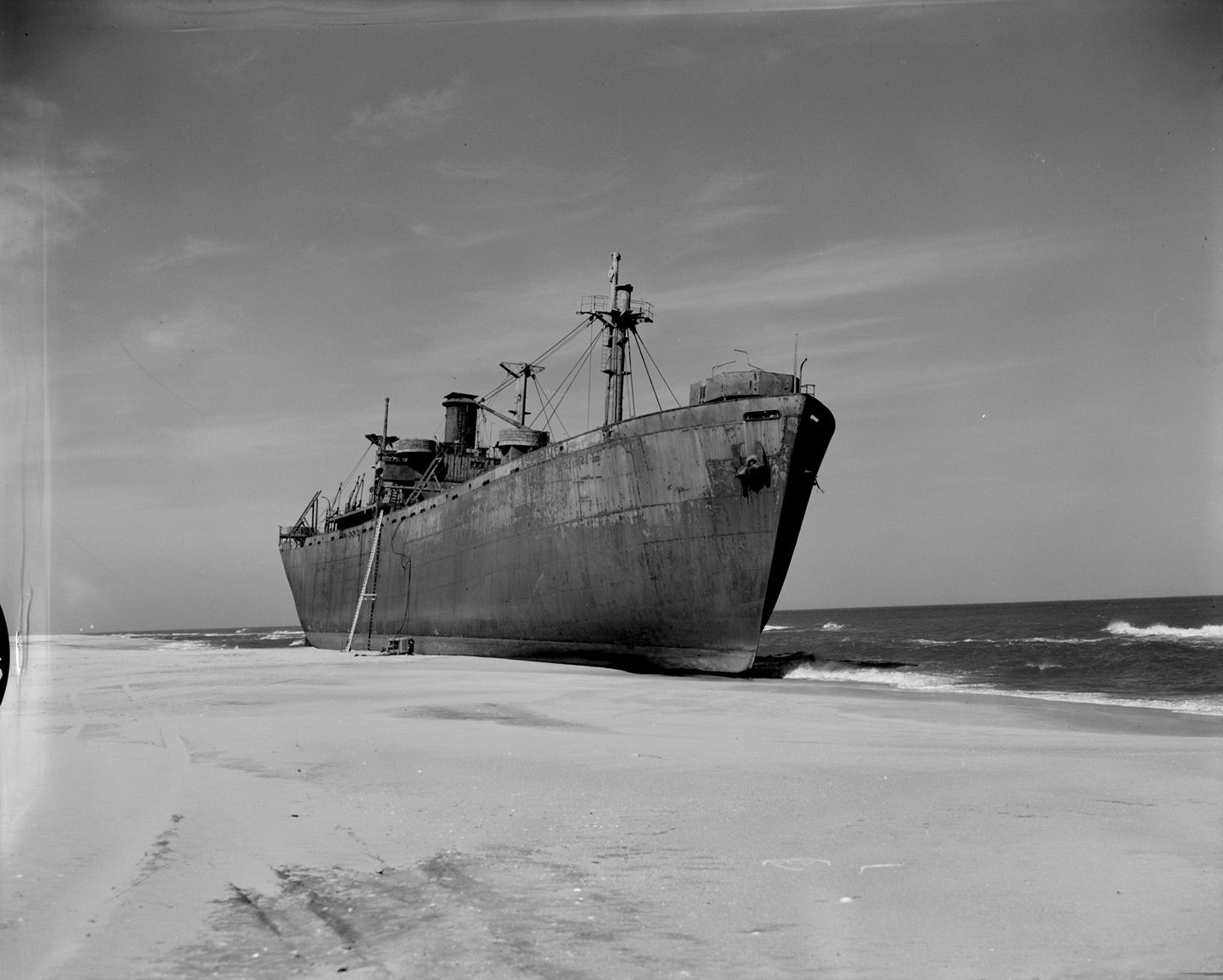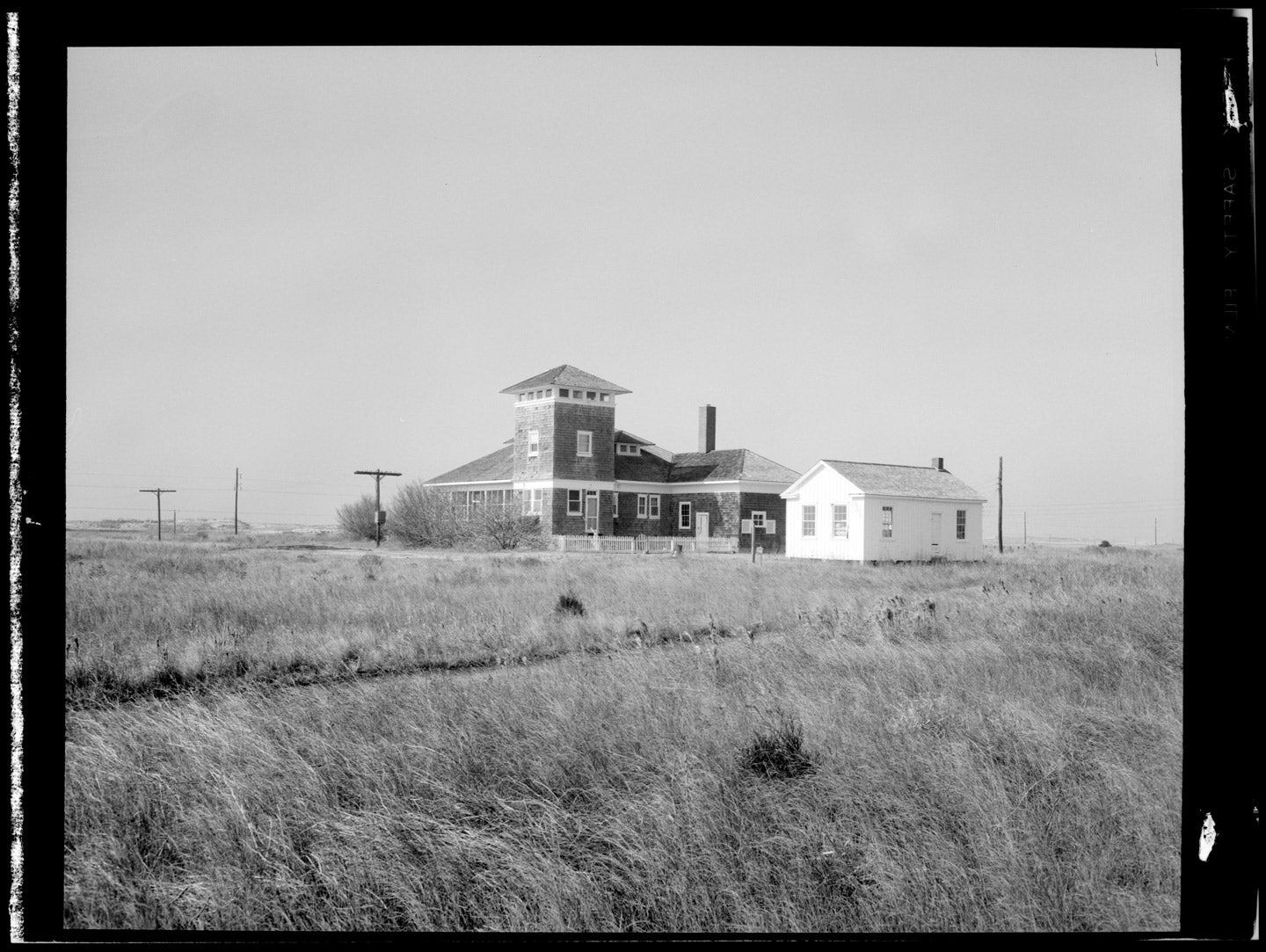Your Cart is Empty
You are €99,00 away from free shipping!
Your Cart is Empty
You are €99,00 away from free shipping!

“You can stand on Cape Point at Hatteras on a stormy day
and watch two oceans come together in an awesome display of savage fury...”
David Stick, 1952
Just off the coast of Cape Hatteras in North Carolina’s Outer Banks, nature’s ferocity can often be found on full display. Here, the warm waters flowing from the Gulf Stream clash with the frigid Arctic Current, creating devastating conditions for generations of seafaring vessels. Here, relentlessly shifting inlets and bays create unpredictable and often unseen hazards. Here, a seemingly endless number of storied ships have met their final, unintended fate.
Here lies the Graveyard of the Atlantic.

The mystery and intrigue that surround these shipwrecks have long led curious explorers to its depths, eager to lay eyes on the eroding remnants that are left behind. How did these vessels meet their fate? What stories might their wreckage silently hold? The Graveyard of the Atlantic offers a cavalcade of these nautical tales. Exact numbers are often debated, but it’sestimated that over 2,000 ships have met their fate here dating back as early as the 16th century. While weather conditions have long marred these waters and the vessels that dare to tread them, Mother Nature is not solely to blame for the many shipwrecks found scattered upon on its ocean floor.
The early 1700’s ushered in the golden age of pirating on the high seas. At the time, the lawless coast of the Carolinas offered prime plundering to some of history’s most notorious pirates. Calico Jack Rackham, The Gentleman Pirate Stede Bonnet, and of course, the legendary Edward Teach...known to most simply by his fear-inducing moniker: Blackbeard. These marauders raided merchant ships that traversed the waters around the Outer Banks, pillaging for goods on board before selling them for personal profit on land. Many of these ill-fated ships rest on the ocean floor of the Carolina Coast, including Queen Anne’s Revenge, the infamous vessel of Blackbeard himself.
Scavenging and sinking were not reserved solely for the legendary pirates of old. Far from it. Wreckers, as they were commonly known, made their contribution to the Graveyard of the Atlantic as well. Many of these opportunists would make their money by capitalizing on a ship’s cargo that would wash ashore, while others went as far as to cause the shipwrecks themselves. One common yet cruel technique was to hang a lantern around the neck of a horse as it trotted along the beach. From a distance, it would appear to be a ship itself, indicating to a vessel’s captain that there was still deep, safe water ahead. Many ships ran aground due to this tactic, adding to the storied reputation of these waters.

While pirates and wreckers represent a fascinating chapter of the history around Cape Hatteras, few have left as enduring a legacy on the Graveyard of the Atlantic as war. Most famously, during the American Civil War, a 987-ton gunboat found itself in the water’s grips just days after Christmas of 1862. While being towed in route to Charleston to join the Union blockade, the USS Monitor met its untimely fate. Heavy storms off the coast of Cape Hatteras weakened the ship at its seams, ultimately sending it to the depths along with 16 of its sailors aboard who were unable to escape. Several years later, the USS Huron would also sink nearby after running aground due to a navigation error, losing over 100 crew members aboard. Fast forward to the U.S. involvement in World War II in the 1940’s, the Graveyard would claim hundreds of Allied merchant ships as well as several German U-Boats in battle, granting these waters a secondary alias... “Torpedo Alley”.

To this day, the shipwrecks scattered throughout the Graveyard of the Atlantic remain of great interest to a great many. Some remain visible from shore, yet many more have been long buried by the perpetually shifting sands below the water’s surface...the same shifting sands that proved disastrous for centuries of vessels. Nonetheless, their legacies remain in some very unique ways. Some residents in nearby communities can trace their lineage back to mariners who were once stranded along the nearby islands, choosing to settle near their lost ships. Many of the historic structures nearby were erected using materials salvaged from the shipwrecks themselves. Moreover, the lifesaving stations established by the government around these waters would help lay the early groundwork for what we know today as the U.S. Coast Guard.
Whether visible or lost to time, each shipwreck interred within its confines represents a chapter in the legendary legacy of the Graveyard of the Atlantic.

Orders shipped to Canada may be subject to import duties, tariffs, and taxes charged by Canadian customs. These fees are not included in our prices or shipping costs. You will be responsible for any additional charges upon delivery. Please review local customs regulations before placing your order.

